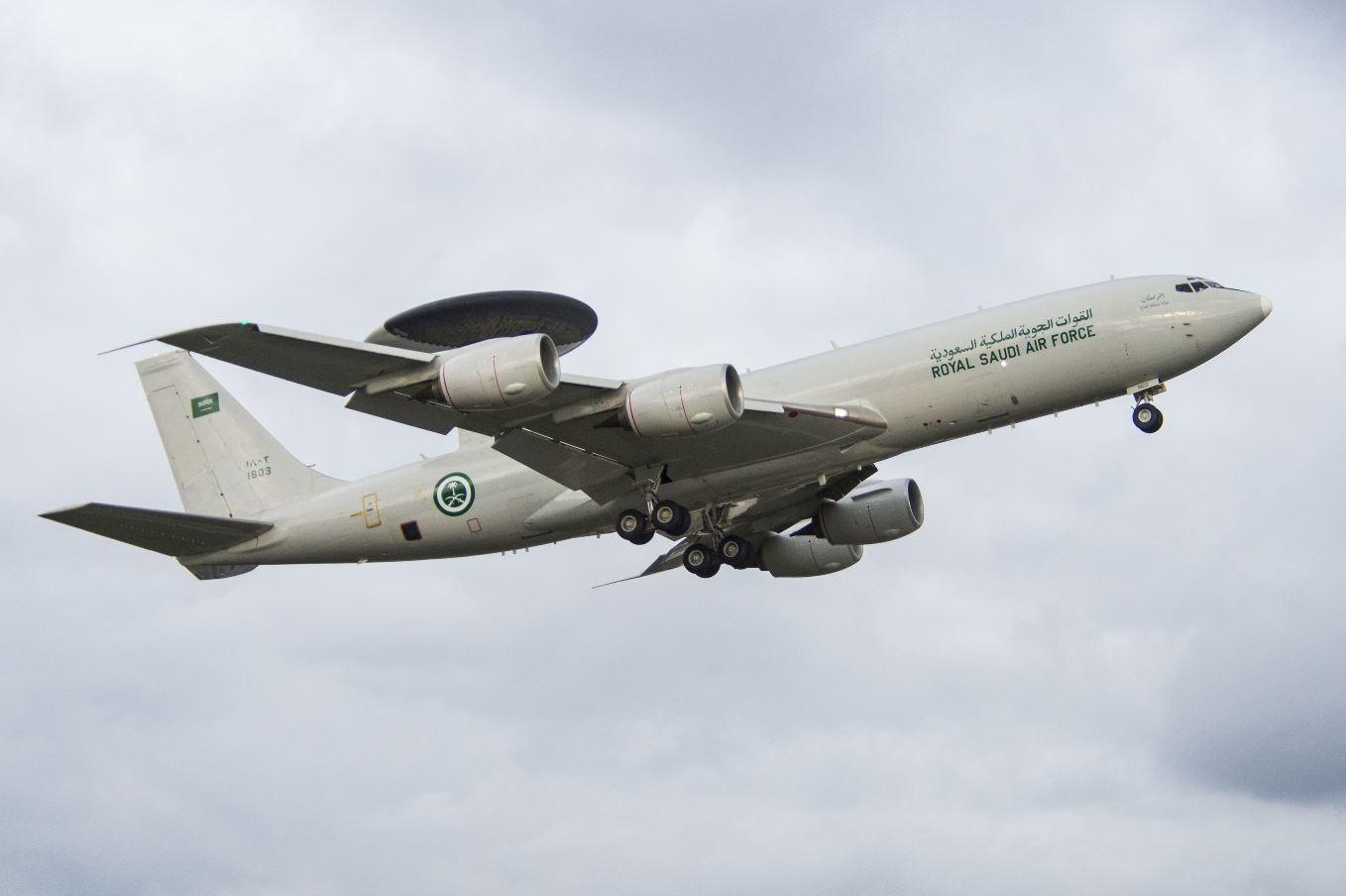The upgrade to Royal Saudi Air Force (RSAF) E-3As under the Radar System Improvement Program (RSIP) is designed to improve radar capabilities and simplify maintenance.
Boeing reports that it has completed a series of upgrades to enhance the capabilities of E-3A Airborne Warning and Control System (AWACS) aircraft operated by the Royal Saudi Air Force (RSAF).
Among the enhancements to improve radar capabilities and reduce repair time for the airborne surveillance fleet are systems that increase the original equipment’s radar sensitivity and expand the range for tracking targets.
The upgrades, called the Radar System Improvement Program (RSIP), comprise a new radar computer, a radar control maintenance panel and electrical and mechanical software and hardware.
Boeing engineers and technicians performed the installation and checkout of the first upgraded aircraft at Boeing Field in Seattle. The remaining aircraft were modified at Alsalam Aerospace Industries in Riyadh, Saudi Arabia, with support of Boeing engineers, technicians and a test and evaluation team.
The RSIP kit is built by Northrop Grumman Electronic Systems and has already been installed on U.S., U.K., NATO and French AWACS fleets.
Boeing delivered five AWACS aircraft to Saudi Arabia between June 1986 and September 1987.
The U.S. State Department approved the Saudi AWACs modernisation programme in August 2014, including five Block 40/45 Mission Computing Upgrade systems and 20 Next Generation Identification Friend or Foe (NG IFF) AN/UPX-40 systems, at an estimated cost of $2bn.

